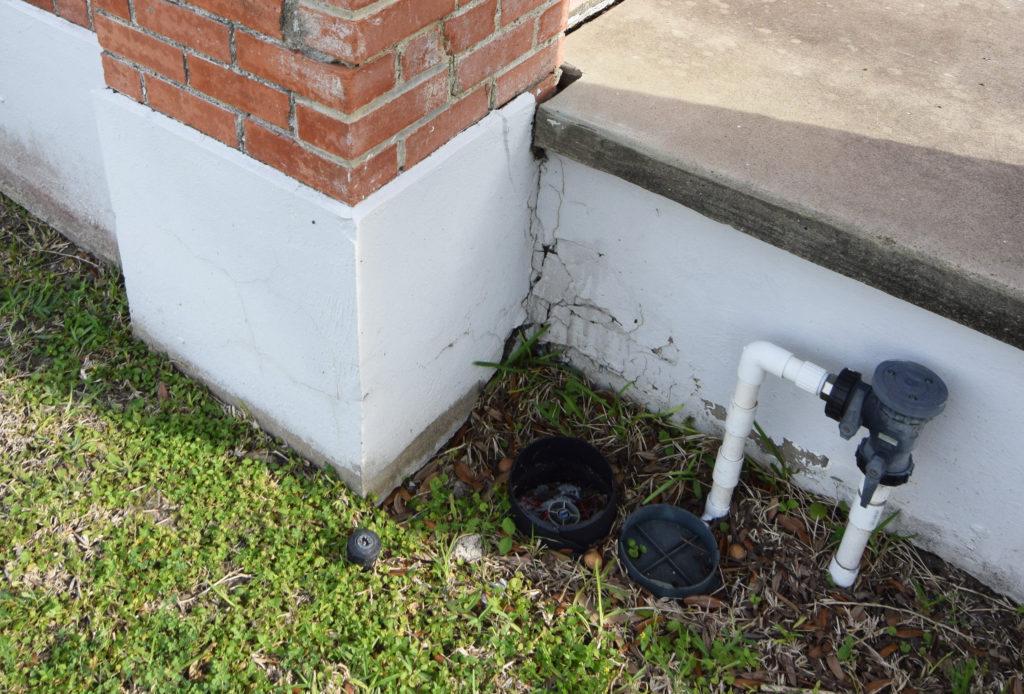Resilience Treatments & Strategies
Foundation

Description
Part of your building’s substructure. The lowest part of the structure that meets the ground and transfers the loads of your building and its contents into the earth. Foundations can be shallow or deep, one way or two way. Many further specific construction types exist (e.g., slab on grade, piles, grade beams, caissons, raft/mat). Some historical foundations, depending on the material and construction, may not be as resilient to disasters as some modern foundations (e.g., they may be less resistant to water infiltration, earthquake damage, or upliftand overturning from high winds).
Typical risk factor of this component:
Moderate
The foundation has some exposure to floodwaters, but little exposure to the elements such as wind and rain. Its importance to the structure’s stability and the impact a failure might have on other assemblies are both moderate.
Typical Damages from Floods or Hurricanes
- Uneven settling (a.k.a. differential settlement) between building areas or elements
- Rising damp (unprotected materials soaking up moisture from the ground)
- Site elements settling unevenly from the building
- Foundations undermined due to soil washout
Other common conditions contributing to vulnerability towards floods or hurricanes
- Lack of protective coatings or finishes in basement or crawl space, or damage to existing
Resilience Treatments and Strategies
In-house
- Avoid use of de-icing salts, fertilizers, and bladed devices in the vicinity of foundations while performing maintenance or landscape work (see also NPS Preservation Brief #47).
Professional needed [type]
Reinforce or enlarge the foundation and its connections with structural stiffening members to improve strength to resist forces such as rapid-moving floodwaters [engineer]. Temporary underpinning may be necessary.
Install damp-proofing to the foundation [architect].
Replace or tamp soil around building to provide greater strength (see also Soil) [landscape architect or civil engineer].
Apply new or repair existing protective waterproof coating (see also NPS Preservation Brief #39) [architect].
Foundation

Description
Part of your building’s substructure. The lowest part of the structure that meets the ground and transfers the loads of your building and its contents into the earth. Foundations can be shallow or deep, one way or two way. Many further specific construction types exist (e.g., slab on grade, piles, grade beams, caissons, raft/mat). Some historical foundations, depending on the material and construction, may not be as resilient to disasters as some modern foundations (e.g., they may be less resistant to water infiltration, earthquake damage, or uplift and overturning from high winds).
Typical risk factor of this component:
Moderate
The foundation has some exposure to floodwaters, but little exposure to the elements such as wind and rain. Its importance to the structure’s stability and the impact a failure might have on other assemblies are both moderate.
Typical Damages from Floods or Hurricanes
- Uneven settling (a.k.a. differential settlement) between building areas or elements
- Rising damp (unprotected materials soaking up moisture from the ground)
- Site elements settling unevenly from the building
- Foundations undermined due to soil washout
Other common conditions contributing to vulnerability towards floods or hurricanes
- Lack of protective coatings or finishes in basement or crawl space, or damage to existing
Resilience Treatments and Strategies
In-house
- Avoid use of de-icing salts, fertilizers, and bladed devices in the vicinity of foundations while performing maintenance or landscape work (see also NPS Preservation Brief #47).
Professional needed [type]
Reinforce or enlarge the foundation and its connections with structural stiffening members to improve strength to resist forces such as rapid-moving floodwaters [engineer]. Temporary underpinning may be necessary.
Install damp-proofing to the foundation [architect].
Replace or tamp soil around building to provide greater strength (see also Soil) [landscape architect or civil engineer].
Apply new or repair existing protective waterproof coating (see also NPS Preservation Brief #39) [architect].